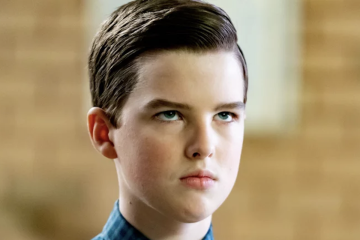
Is classical education research-based?
Classical education has surged in popularity, with 264 new schools cropping up since 2019, a host

Classical education has surged in popularity, with 264 new schools cropping up since 2019, a host








Classical education has surged in popularity, with 264 new schools cropping up since 2019, a host of think pieces analyzing its growth, and state-level policy shifts that bolster its expansion. I found myself a proponent of classical education via a roundabout path, backing my way into it after following the research on effective instruction.
In many ways, my discovery of classical education resembles an amusing passage from G.K. Chesterton’s theological classic Orthodoxy. He imagines a seafarer, caught in a storm, who runs aground on England’s shores and mistakenly believes that he has discovered a new land. Each verdant forest and rolling hill appear to him as a new London, when in reality he’s a few miles outside old London. To Chesterton, the story analogizes his conversion. He step by step built what he thought was a unique philosophical framework only to realize he had constructed the outlines of orthodox Christianity.
My discovery of classical education followed a similar trajectory. While teaching, I grew enamored with instructional research and (often in these pages) gradually dismantled my commitment to dubious beliefs, including student-directed curriculum, project based learning, soft-on-consequences theories of discipline, differentiation, and the workshop model for literacy instruction, to name a few. In their place, research led me to such things as knowledge-rich curriculum, worked examples, low-stakes quizzing, direct instruction, and lots of memorization, discussion, and writing.
Lo and behold, I looked around and found myself on the shores of classical education. The research that I thought had led me to novel theories of learning placed me but a few miles outside of old education. That is a long way to the question posed in the title: Yes, classical education has all the elements of a research-based education.
In visiting a number of classical schools and conferences in recent months, I’ve seen many aspects of effective instruction. Elementary teachers practiced phonemes with their charges. Administrators told me about the importance of well-established routines and behavior systems. The Hillsdale Barney School Initiative posts its curriculum online and would make any knowledge-rich or phonics advocate cheer.
The canonical texts of classical education reference many instructional best practices. For example, Mortimer Adler’s The Paideia Proposal emphasizes the importance of didactic instruction (what researchy types call direction instruction). And Susan Wise Bauer’s The Well-Trained Mind discusses the need to furnish the minds of children with facts, pictures, stories, and other such knowledge—which sounds an awful lot like schema theory.
Such similarities between research-backed practices and classical education shouldn’t surprise us. Our institutions and traditions don’t appear ex nihilo. Rather, they emerge from trial and error and from generations of inherited knowledge. “Well, that’s just the way we’ve always done it” might well be a good reason to keep doing something that way.
Each element of a traditional classroom serves a purpose. Raised hands allow classroom discussions to flow without devolving into a cacophony of voices, bells and passing periods allow swift and uniform transitions, while desks in rows keep attention forward and temptations to distraction minimal.
It’s unsurprising then that research confirms that “the way we’ve always done it” actually works pretty well. If it didn’t, people would have started doing it differently!
Accordingly, it amuses me whenever I see supposedly innovative schools try to in fact do things differently, only to revert to traditionalism. As I’ve written about here before, the concept of “open classrooms” crops up every few years, wherein students move from learning station to learning station at their whim in giant rooms with flexible seating. And every time, schools end up rebuilding walls, or failing that, teachers use whiteboards and bookshelves to create makeshift boundaries.
With a foot in both worlds, I’ve noticed that the research-based wing of education reform—such as the systems of “no excuses” charter schools or organizations such as researchEd—and the world of classical education have much in common; they share similar ideas and advocate for similar instructional and curricular norms, even if they use different language. If anything, modern proponents of research-backed instructional practices have merely rediscovered an old-fashioned liberal arts education and rebranded it with philosophically positivist vibes.
That being said, while classical education certainly has all the right ingredients for a research-backed educational initiative, the movement would benefit from studies of their particular systems of schools.
For example, charter schools such as KIPP have opened their doors to researchers, allowing them to run various lottery and comparative studies to see how these schools stack up against traditional public schools. The resulting data have made for some of the most forceful arguments in defense of charter schooling. Were Hillsdale’s Barney Schools or the system of Great Hearts Academies to do the same, I’d wager that such research would find they are indeed quite effective and so provide incontrovertible evidence to bolster, justify, and expand the classical education movement.
And if research vindicates that bet, the classical education movement could prove a powerful force in American education. Where some “no excuses” charter systems have compromised on their core beliefs, classical education’s foundation in objective virtues and the Western tradition could provide it a stronger base upon which it can weather political pressures. Moreover, its popularity could positively influence the broader public school system away from its current obsessions with identity solipsism and politically charged content and back towards a traditional, liberal arts education.

Ten years ago, when Florida launched the nation’s second education savings account program, a beautiful thing happened. Friedrich Hayek would have called it “spontaneous order.” Parents, within days, began forming a multitude of Facebook groups where they traded advice on how to access the accounts, how to use them, and what learning options were available in their area.
Parents helping parents. What could be better?
In those days, Florida’s ESAs, then called Personal Learning Scholarship Accounts, were exclusively available to students with special needs. The parents who applied were often highly engaged. They were used to fighting for their children, overcoming objections from decision-makers who misunderstood them, and having to do their own research or assemble their own solutions.
These high-agency parents played a critical role in the early days, helping stave off a teachers union lawsuit and convince legislators to increase funding each year.
Looking back, the self-organized parent groups made other essential contributions. They provided what marketing gurus call “social proof.” They shared their experiences and showed potential skeptics that this new program that allowed them to direct public education funding to options of their choice was legitimate and valuable. They often provided more actionable how-to advice than official information sources.
And they made visible a reality about education that is often invisible. Parents’ social networks often play a critical role in discovering information and solving problems, from finding out which schools are the “good schools” to working the system to get children what they need.
Not every parent has access to the same social networks, however. And demographics often predict who gets left out. This is a problem in education generally, but it’s especially salient with education savings accounts, which place parents in charge of their children’s educational destinies, even more so than conventional school choice programs, since they allow parents to mix and match a panoply of learning options that could include one school, multiple schools, or a fully customized education with no full-service school in the mix at all.
Recently, researchers with Tyton Partners interviewed ESA parents in Florida and Arizona, the two nation’s two most mature programs of this kind. They found that, compared to families making more than $150,000 per year, families earning less than $50,000 were less likely to be aware the ESA programs even existed and less likely to sign up for them.
Among those who did sign up, the lowest-income parents reported less desire to re-enroll. They were less than half as likely as those in more affluent households to indicate they were “highly likely” to recommend the programs to others.
This disparity underscores the value of folk knowledge. Information about what programs exist and how to derive the most benefit travels through social networks, which disproportionately benefit affluent and highly engaged parents. This need has generated growing enthusiasm for organizations that exist to make this information accessible to everyone: education navigators.
A new series of reports from Bellwether, “Charting a Course,” identifies four functions of navigators:
This year, Florida made the nation’s first effort to support education navigators in an ESA program, defining choice navigators in statute and making their services an eligible expense for scholarship families.
So far, roughly 200 individuals have signed up to offer navigator services, many of them tutoring companies or homeschool consultants. Under Florida law, navigators need to show they hold credentials or can document expertise sufficient to serve as a classroom teacher.
These small, parent- and educator-run businesses are mostly helping families with the first two functions Bellwether identified: setting learning goals and identifying options to meet them. Receiving this help from a qualified educator has clear potential value for a parent directing their child’s education.
But it’s no replacement for the value more fortunate parents glean from their social networks: the information necessary to make informed choices, the resources to overcome logistical barriers (from carpools to ad hoc childcare), or connections to fellow families who can help build confidence in their choices.
For one thing, there’s still a chicken-and-egg problem. What about the families who don’t know the ESA program exists or that navigator services are available? What about the families who don’t have ESAs but still need help navigating the hidden curriculum of public education? Some of the most valuable contributions of navigators, in other words, do not lend themselves to fee-for-service business models and will require other forms of support.
Additional Bellwether reports unpack the potential policy and funding solutions that make navigation services sustainable. Each model has its drawbacks. Philanthropy is hard to sustain long-term and at scale. Dedicated public funding relies on the support of policymakers who must weigh competing priorities, like addressing learning gaps exacerbated by the pandemic after federal funding expires.
Some models that get tried don’t work out. The Bellwether report cites Ed Navigator’s efforts to offer navigator services as an employee benefit. There, again, the chicken-and-egg problem surfaced. In economically diverse workplaces (think a hospital that employs doctors as well as food service workers), the more affluent employees were more likely to take advantage of navigation services.
There won’t be a single solution, but each experiment with education navigation our understanding about the mix of solutions that might work. It’s time for states and local community organizations to experiment with diverse models to invest in building the social capital of families who otherwise find themselves left out of the spontaneous order.

“The Big Bang Theory” premiered September 2007. My husband has a nuclear engineering degree from MIT. Our younger son, then four, was a budding scientist. (Sample conversation: Him: Can’t come out of the bath. Working on surface tension and light refraction. Me: You mean splashing?)
We tuned in to the pilot. We liked it well enough to keep watching. However, as inevitably happens with Chuck Lorre shows, the humor quickly became mean-spirited, the characters nasty, the plots cliched.
When “Young Sheldon” debuted ten years later, though, it seemed different enough in spirit that we gave it a shot.
By that time, we had a fourteen-year-old son who’d been begging us to let him drop out of school since third grade. He said he was bored. He said he wasn’t learning anything. He said he could do a better job educating himself.
We struck a deal. He would stay in school, behave himself in class, and, once he graduated 8th grade, he could go straight to college.
There were definitely ups and downs over the intervening five years. Instances like his teacher calling to report he got an uncharacteristic D on a geography test. “I don’t think it’s a learning issue,” the teacher began.
“Oh, it’s a learning issue,” I snapped. “He didn’t learn the material.”
My son informed me he didn’t study for the test because he found geography pointless. I informed him that this wasn’t keeping with our bargain.
There were also report cards with the note: His need to question everything the teacher says can become tiresome.
A sample exchange:
Teacher: Think of “is” as an equal sign.
Him: No. Because if you say, “A rose is red,” then the color red is an aspect of the rose, but if you say, “Red is a rose,” a rose is not an aspect of the color red.
He managed to graduate eighth grade. He’d kept his promise. I was determined to keep mine.
We agreed one of New York’s city colleges would be fine. But, as it turned out, CUNY won’t let applicants take its placement test without a high school diploma. Over 50 percent of teens who graduate NYC high schools with a diploma can’t pass the CUNY placement test—but passing the placement test won’t get you a high school diploma!
With the plan for him to attend an affordable school and live at home proving impossible, we adjusted our parameters and visited Simon’s Rock, an early college in Massachusetts. Though it was by no stretch of the imagination affordable, it claimed to meet all financial need via scholarships.
To make the day trip happen, my husband and I took off work. Because neither of us drive, my brother volunteered to chauffeur us, which required him taking time off work, too. I arranged for my daughter to go to a friend’s house after school and for my oldest son to pick her up from there in the evening.
While none of us were impressed with Simon’s Rock’s academics, we still allowed our son to apply. He was ecstatic to get in. Then came the price tag. They wanted four times what we were paying for our oldest to attend an Ivy League university. So much for “meeting all financial need.”
My son was devastated. He was furious. He was belligerent.
Seeing him so upset, I was severely tempted to find some way for him to go. We’d borrow the money.
This is where “Young Sheldon” came in. That show’s narrative never matched “The Big Bang Theory’s.” Adult Sheldon maintained no one in his family understood his genius or supported him.
Yet, in seven seasons of the spin-off, we watched Sheldon’s mother, father, and grandmother go out of their way to drive him to his university classes. His dad flew with him to Caltech. His mom went with him to Germany. Sheldon was incredibly supported by his family—which he never appreciated.
What stopped me from giving in to my son over early college was watching Mary perennially giving in to Sheldon—and the entitled, self-absorbed monster that turned him into. One who didn’t even notice the sacrifices other people were making for him, because he simply accepted it as his rightful due.
So we told our son he’d be attending Stuyvesant, NYC’s top public high school. At the end of freshman year, he asked again to be allowed to drop out.
We didn’t let him.
The reasons were, once again, connected to “Young Sheldon.” I didn’t want to give my son the sense he was better than the people around him. Stuyvesant is a school for NYC’s highest performing students. If it was good enough for them, it was good enough for him (and his father and his brother, too). The last thing I wanted was a boy who, like young Sheldon, thinks he’s smarter than everyone around him and that this gives him license to belittle them. A kid like that grows into an adult who mocks his friend for “only” having a master’s degree (even though said friend is also an astronaut) and dismisses entire areas of study, like geology, as not real science.
So my son returned for sophomore year. And then the pandemic hit. Now when he said he wasn’t learning anything and showed the level of work that was being asked of him, I was forced to agree.
So could he drop out and educate himself now?
Yes. But on one condition. Again, thanks to “Young Sheldon.”
I told my son he could drop out and homeschool himself. But he would do all the work himself. He would research homeschooling law himself, and file the paperwork himself, and select his classes himself, and arrange to take his Advanced Placement tests (and, later, his high school equivalency) himself. I would not lift a finger to help.
This was because, on “Young Sheldon,” I saw what happened when a mother put one child’s needs above all others.
I watched Missy explain that while her dad and older brother Georgie have football in common, and her mom and Meemaw are always “fussing over Sheldon,” Missy is left on her own. I seethed when, during a trip to Houston so Sheldon could debate math with a NASA scientist, Missy’s pleas to stop at an ostrich farm are ignored. And I was driven to tears as Missy’s cries for attention, to the point of running away from home, are dismissed and punished, while Sheldon’s horrible behavior is excused and even rewarded.
That wasn’t going to happen at my house. Thanks to “Young Sheldon,” I went out of my way to make sure it wasn’t only my son’s triumphs which were celebrated. I insisted he attend his sister’s gymnastics meets and, when she competed internationally, that we watch the livestream of her opening ceremony. (Did we see her in the throng of thousands? No, we did not. But that wasn’t the point.) Her accomplishments were no less valuable than his.
Last month, Jonathan Plucker wrote about the sitcom “‘Young Sheldon’ provides insight into parenting bright children.” I couldn’t agree more. But for me, the show proved a blueprint for everything not to do.
I didn’t want a son who acted like young Sheldon Cooper. I most certainly didn’t want one who grew up to behave like adult Sheldon. Even in the last episode, Jim Parsons’s cameo demonstrated that Sheldon still spoke condescendingly to his wife, had no interest in supporting his children’s passions, and mocked people whom he called his friends.
If looking at everything Mary Cooper did when raising Sheldon and doing the opposite was what it took for me to raise the anti-Sheldon, then so be it.
But how could I argue with Sheldon’s success, some might ask? He went to Caltech! Doesn’t that make putting up with his abhorrent personality worth it?
If that’s what we’re using as a metric, then my son also got into Caltech—but chose to go elsewhere. There’s definitely more than one way to parent a bright child. I chose to go the anti-“Young Sheldon” route.
Editor’s note: This was first published by Education Next.

Tennessee lawmakers adopted a new school funding formula in 2022, moving from a staffing-based to a per-pupil-based model with the intent of directing more state dollars to students who need them most. A recent report looks at the first year of implementation— 2023–24—to see if this aim was achieved.
The new model is weighted based on characteristics of student need. It begins with a base amount for every student—roughly $6,900—and provides additional funding for those who are poor, English learners (EL), or have special needs, as well as students in schools and districts that are small or located in sparsely populated areas, among other attributes. The weighting for each category varies, but here are three examples: Economically disadvantaged (ED) students receive 25 percent of the base amount added on; EL students receive between 20 and 70 percent add-on, depending on fluency level; and special education students receive between 15 and 150 percent add-on, depending on the intensity of support their learning challenge requires. Students in multiple categories can receive each additional amount for which they qualify on top of the base.
Analysts projected funding levels for each district based on the new categorical allocations and accounting for student and school demographics. Researchers compare these projections to the actual funding received in 2023–24 to see how well the system was functioning: Did it direct more resources to high-poverty students (meaning more progressive in nature)—or did the plans on paper not match up to reality?
Results show that the base amount accounts for the majority of funding dispersed under the formula—75.6 percent—and that, outside that base, the largest category is for ED students, whose needs account for 6.3 percent of total funding. Students with language needs account for 4.4 percent, while the various special education needs together account for 5.7 percent. The different add-ons for district and school attributes account for the remaining 8.2 percent of the total.
On paper, the formula intended a funding advantage between ED and non-ED students of $1,715 per pupil. But analysis of the distribution of funds at the start of the 2023–24 school year—capturing the difference in real-life exposure to per-pupil funding—finds the actual advantage was just $299, a mere 17.4 percent of the formula-intended difference. That reduction was driven by the blend of poor and non-poor students within districts. That particular mix depends on a combination of factors, such as segregation by income, district boundary lines, and how districts are distributed by size—and of course, these are complex interactions.
We’ve long hand-waved away such complexities, in part because we didn’t have better data. But knowing how districts allocate funding to schools and how schools allocate funding to students would help us better account for the aforementioned mix of students within districts—and how that mix interacts with intended funds. Those data tracking efforts are thankfully underway.
This is, of course, not the first time that a well-intended legislative fix did not work out as planned. School funding is subject to geographical, political, and bureaucratic contexts that have long proven difficult to adjust for in a formula. But it is worth the headache to figure it out. This study gets us another step closer.
SOURCE: Christopher Candelaria, Ishtiaque Fazlul, Cory Koedel, and Kenneth Shores, “Weighting for Progressivity? An Analysis of Implicit Tradeoffs Associated with Weighted Student Funding in Tennessee,” Annenberg Institute (October 2023).

Kudos to the Strada Education Foundation for its brand new State Opportunity Index, designed to gauge how well post-secondary education in each state prepares graduates to join the workforce and earn a living wage. The index establishes a baseline for how states are doing in five priority areas: clear outcomes, quality coaching, affordability, work-based learning, and employer alignment.
The resource begins with a state-by-state return on investment (ROI) calculation for graduates who earn bachelor’s and associate degrees. To determine the ROI, the index compares the cost of obtaining a degree—including paying off student loans within ten years of completion—to the individual earnings that a graduate can expect based on the type of degree they earn.
At the top of the heap, 78 percent of degree-earners in California and New York can expect a positive ROI within ten years of completion. The lowest is Idaho, at 54 percent. Bachelor’s degree holders can generally expect a quicker positive return than their peers with associate degrees, despite the substantially cheaper price tag of the latter. Only three states—New Mexico, Vermont, and Wyoming—show a stronger ROI for associate degree earners than for those who earn bachelor’s degrees. Workers who are making at least $50,000 per year are likely to experience positive ROI in even the most expensive state. Workers earning less than $30,000 per year, on the other hand, will not experience positive ROI no matter how inexpensive their postsecondary education was, as their earnings do not exceed those of a high school graduate with no degree.
The bulk of the index then looks at those five priority areas and provides a rating for each.
The “clear outcomes” priority examines whether the data are available to allow high school students to know what their post-secondary education journey will look like—trade school, university, certification, apprenticeship, military service, etc.—and what types of jobs each option could lead them to. The biggest winners here were states whose data sources connected education and employment across numerous agencies and were (or were becoming) publicly available.
The “quality coaching” priority asks whether college students received timely information and guidance to help them navigate their chosen pathway. Data come from a national survey of college graduates from 2020 to 2023. On the upside, students who reported receiving coaching saw measurable benefits from it. On the downside, all states individually and the nation as a whole ranked very low in providing employment-related coaching to post-secondary students.
The “affordability” priority looks to see how well states eliminate cost as a barrier to postsecondary education. These data were calculated based on the number of hours a college student would need to work annually—while earning their state’s median wage—to cover the net price of their education. California and Washington are the most affordable; Alabama, Georgia, Louisiana, Montana, New Hampshire, North Dakota, Ohio, Pennsylvania, and South Dakota are the least. These outcomes, like the ROI analysis, are driven mainly by the median incomes in the various states.
“Work-based learning” describes the number of students who completed an internship (paid or unpaid) during college and the benefits of those internships. Data again come from that big national survey. Graduates who complete a paid internship are much more likely to end up with a first job that requires their degree (73 percent), compared to those who did not (44 percent). They are also more likely to be satisfied with their first job and their progress toward their long-term career goals, compared to students who completed an unpaid internship or no internship at all. Internships were more prevalent for bachelor’s degree students (approximately 50 percent) than for associate degree students (approximately 25 percent). Associate degree students were more likely to have unpaid internships, while their bachelor’s degree peers had paid internships.
Finally, the “employer alignment” area scores each state on the supply/demand ratio of workers for a variety of high-demand and high-wage jobs, including cybersecurity, health care technician, software development, and engineering. The methodology for this important area is restrictive, focusing only on jobs that require bachelor’s degrees (and fewer than three years of experience) and only on bachelor’s degree earners who have these jobs. Additionally, the analysts aren’t able to factor in graduates who move to another state in pursuit of a job after earning their degree or who live in one state but work remotely in another. Since this area is restricted only to talent supply and demand data within a single state, it is probably not surprising to see low grades for all of them.
For each priority, the index gives a raft of recommendations aimed at helping states climb the rankings. My colleague Jessica Poiner has taken a deep dive into Ohio’s ratings and what they mean. All states could benefit from taking these findings and recommendations seriously.
Yet the index itself has room for improvement: expanding its focus to include non-college pathways to opportunity (such as military service and credentialing), looking at how K–12 education impacts these priority areas, and an examination of how remote work figures into economic opportunity, to name just three.
SOURCE: Strada Education Foundation, “State Opportunity Index: Strengthening the Link Between Education and Opportunity” (May 2024).

On this week’s Education Gadfly Show podcast, Robert Pondiscio, a senior fellow at Fordham and the American Enterprise Institute, joins Mike and David to discuss the lack of curriculum oversight in American schools. Then, on the Research Minute, Amber examines a new study of whether aspiring teachers’ professional references predict their later performance.
Recommended content:
Feedback Welcome: Have ideas for improving our podcast? Send them to Daniel Buck at [email protected].

Cheers
Jeers
